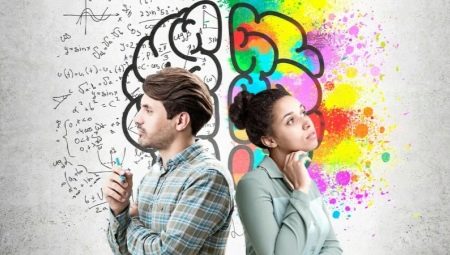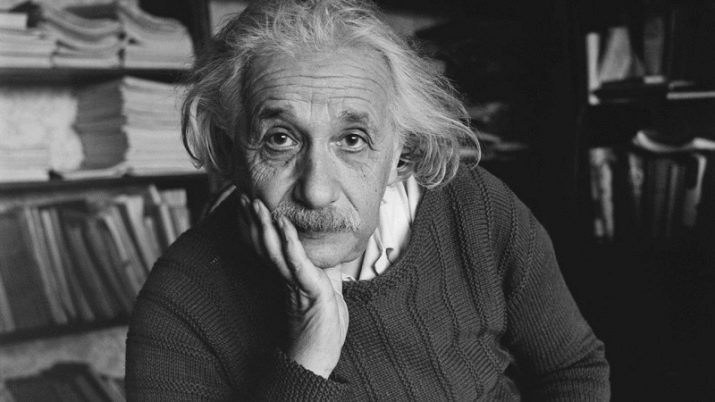Divergent and convergent thinking: definition, features, recommendations of psychologists

Everyone solves problems in their own way. One in search of answers will begin to study the textbook, the other will look for the answer in his own head, and she will offer several options. Most likely, both of them will find a way out. But the first will do it according to all the rules, the second - using imagination. The whole difference is in the way of thinking. In this case, we are faced with people with pronounced types of convergent and divergent thinking.
What it is?
Joy Guilford, a psychologist from the United States, introduced the concepts of convergent and divergent thinking. In the 60s of the last century, he identified these two types. According to his definition, convergent thinking is aimed at finding the only right solution. The peculiarity of the divergent one is that its owner approaches the solution of the issue outside the box, in another way it is called creative.
In simple words, for one in the first place - the rules, the second - his own thoughts, he does not treat generally accepted norms as a kind of dogma.

Features of thinking
Divergent
The term comes from the Latin divergere, which means to deviate or diverge. A person with a divergent way of thinking is looking for several answers at once to the same question. He approaches the solution of the problem in a complex manner, often based on his own feelings. It has the following characteristics:
- speed of perception - a person gives out a lot of ideas in a short time;
- the ability to think in images;
- variety, the ability not to get hung up on one option, change your point of view;
- observation - he notices what others overlook or do not attach importance to;
- non-standard, the ability to give out original ideas.
Most often, creative people have this type of thinking. They are generally not considered outstanding students at school. It is difficult for them to stay within the general program. Studying the multiplication table is much more difficult for them than writing an essay on any topic.
These people are creative both in their professional life and in their personal life. A prime example is the great theoretical physicist Albert Einstein... As a child, he did not show outstanding mental abilities. The teachers didn't really appreciate him. However, this did not prevent him, having matured, to become one of the most famous scientists of the 20th century.
Perhaps the most accurate definition of him and other people with a pronounced divergent thinking was given by the contemporaries of the Nobel laureate. They said that talking to him was like being in the fourth dimension. There are only a few people like Einstein, they make up a special, unlike anyone else part of society. But it is thanks to them that the greatest discoveries are made.
They are not afraid of experiments, they do not think like everyone else, and as a result, they make life better, more understandable and of better quality.

Convergent
The term also came to us from Latin, where convergere means "to converge to one center." This type of thinking can be compared to the school curriculum, which most often uses the "mass" approach. I learned a theorem - a five in a magazine with a red pen, doubted the need to study chemistry - an outcast, lazy, poor student.
However, not always a person with encyclopedic knowledge is able to understand life as well as in the laws of geometry. Its lines never intersect. He doesn't give himself the right to doubt. Together with the gold medal, he does not receive a precious cage at all, which does not allow him to go beyond the limits imposed by the educational system. In his life, everything is laid out on the shelves, and if this very shelf breaks, then he turns out to be helpless.

Diagnostics
If a person has at least some degree of developed both types of thinking, he is a potential genius... However, these are rare. Determining what type is inherent in a particular person is quite simple. The most common way is to offer a list of certain objects, for example, "bucket, bed, table, bedside table" and ask the subject to tell you how you can use them. If he has a bucket exclusively for garbage, a bed for sleeping, a table for eating, a bedside table for storing jewelry, we have a bright owner of convergent thinking.
If, when answering this question, mediation is used, that is, a bucket may well become a musical instrument, a bed - a screen for a home puppet theater, a table - a canvas for a picture, and a bedside table - a chair, then divergence is applied.
The more different options are offered, the better this type of thinking is developed, which helps to be flexible in different life situations. Therefore, it should be developed.

Ways to develop divergence
You can develop it with the help of various exercises. Moreover, they are applicable to both preschoolers and adults. Start completing assignments with the whole family or at lunchtime with coworkers. Do this regularly. Turn these activities into a game.
Be sure to choose a winner. Set the prize pool. Do everything in order to interest your loved ones or subordinates in this. Among other things, it will help relieve stress.
Exercises
- Write as many words as possible starting with the letter U... Then ending with G. Further, those with the third letter in which G. Allocate a certain amount of time to compile each list. For example, 3 or 5 minutes. Repeat this game regularly, changing letters, introduce new conditions. Write not all words, but only nouns, then adjectives.
- Take any item. The challenge is to come up with as many ways to use it as possible.A pencil, for example, can not only write, it may well become a perch for a bird in a cage, an index stick, a measure of length, and so on. Change objects, try to create "constructions" from two or three different things.
- Come up with different solutions to everyday problems... The light bulb is burnt out. How to set up lighting? Name 10 ways to do this. Going to the store for a new one, using the phone light, lighting the fireplace, and so on. Don't stop until you've come up with exactly 10 answers.
- Write a sentence in which all words begin with a specific letter. Next time, complicate the task - set a certain number of words.
You need to perform it at speed. This will help develop the speed of the reaction.

Kids games
While the child has not yet learned to write and read, Various pictures and objects can be used to develop divergent thinking.
- Collect 5 different toys. The child's task is to come up with a story that they will become the heroes of.
- Place multiple items on the table - one of them in this game is "main". Define it and ask the child to guess using leading questions. Is it blue? Is it round? Is it heavy? Etc.
- Dance competition... Turn on the music and invite the child to show different states with the help of movements and facial expressions: joy, anger, sadness, fun.
- Give your child a piece of paper with part of an image. The task is to finish painting the picture.
- The same can be done with the application. Make only the central part of it. Invite the child to complete. For example, create your own seven-flowered flower. Lay out the stem on the paper. The baby's task is to attach leaves and petals to it.
- Place as many different items as possible on the floor. The child's task is to divide them according to a specific feature (color, size, material).
- Invite your child to describe a specific subject... Tell him what he likes and what he doesn't. Why this particular doll is his favorite, but he never uses a green pencil?

Tips & Tricks
If at least sometimes it seems to you that you are at a dead end and for all your education you cannot find the optimal solution to some problem, try the following methods.
- Look for multiple answers to any question. Often the truth lies on the surface, and we dig too deep to find it.
- Imagine how the situation will develop if you go along different paths. Go through all the options in your head. Don't dwell on one thing, even if it seems to be the only one right.
- Forget what you were taught at school for a while.... Try to solve the issue logically, without applying generally accepted rules and regulations. Imagine how the majority thinks and deduce the formula for the minority. It is likely that it will be optimal for a specific task.
- Don't separate theory from practice... Always calculate how your plans will be realized in life.
- Don't stop there. Even if you have found a seemingly absolutely correct solution, try other options.
- Use the help of colleagues and friends. Arrange brainstorming sessions. Perhaps one of your children will give you a brilliant idea.
- Keep a notebook close at hand and write down all your even the most daring and unexpected ideas. If not now, then later they may well come in handy.
- Write on a piece of paper all your thoughts on an exciting issue. After a while, re-read. Surely among the many words you will find something that will point you in the right direction.

But you should not rush from one extreme to another. Yesterday's physicist will not become a lyricist today, as well as vice versa. Remember - both convergent and divergent thinking are important in everyday life. Therefore, it is necessary to develop both. Divergent thinking consists of disparate, often spontaneous ideas.It cannot be measured on a standard five-point scale, as opposed to convergent.
And in human psychology, there is a desire for a specific result. Therefore, when drawing up a work plan, think of how this or that achievement will be encouraged. It is impossible to objectively assess the drawing of a three-year-old baby and give a clear description of a gifted child. But you can interest him in creativity, in the invention of something new.
Surround your child with construction sets, puzzles, disassembled toys. Do not scold if, instead of a hand, the baby attaches a leg to the doll or draws a green sun. Don't stop him experimenting. But do not forget to give practical skills as well. Even if a girl dances like Anna Pavlova, it doesn't hurt to know that twice two is four. If a boy draws well, it is still important for him to understand that "rolls do not grow on a tree."
If your child refuses to learn to count, turn it into a game. Remember to reward his success. Offer the child himself to choose a "prize" from several options: going to the zoo, ice cream, watching a cartoon. Offer him more options in everything. Let him think in different directions, and then his life, like yours, will become diverse. In the future, it will not be difficult for such a child to find a way out of any unusual or non-standard situation, and a difficult question will never be confused.
A person will go through life boldly, without fear of making mistakes. And, perhaps, it will be about him in the next century that they will say that he was one of the outstanding scientists of the XXI century.









